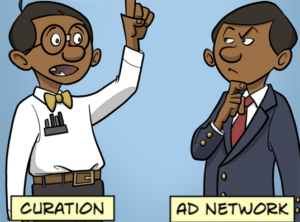“Data-Driven Thinking” is written by members of the media community and contains fresh ideas on the digital revolution in media.
Today’s column is written by Luke Lambert, head of programmatic at OMD USA.
With COVID-19 creating a domino effect across the marketing ecosystem, agencies such as ours have been in almost constant discussion with clients to help them review and adapt their media strategies during this unprecedented moment.
As with prior public crises, advertisers are rightly putting a sharper lens on brand safety, messaging and context. But the depth and breadth of COVID-19’s impact distinguishes it from any scenarios of the past, significantly reshaping media consumption behaviors, the content ecosystem and consumer shopping activities almost overnight – and almost every night.
The agility and responsiveness of programmatic media are well-suited to match the speed and unpredictability of these broader changes. Even the savviest of marketers may find themselves hard-pressed to keep up during such volatile times, but there are several steps they can take to assure message effectiveness in the current environment.
Lead with empathy
If programmatic practitioners have learned anything over the past few years, it is that context matters. Chasing audiences around the web without any consideration for the context is the fastest route toward a brand-safety disaster.
The circumstance in which advertising shows up should always be considered – but never more so than in times of crisis. Disinformation, divisiveness, despair – these are contexts that can erode brand health and trust. Now is the time to look beyond reach, frequency and CPMs to put considerations of consumer sentiment, context and content at the heart of your approach. Lead with empathy, achieve accountability.
Diversify your portfolio
With social distancing now the law of most of the land, consumers are devouring video and online content. At the same time, supply dynamics are unsettled as content tentpoles are canceled or delayed, exacerbating availability and pricing volatility.
Having a diverse mix in programmatic is always a good strategy, but it is more important than ever under these market conditions. Direct deals and private marketplaces are options for attaining premium market positions and will bring stability to a buy, while controlled use of the open exchange can provide a boost in reach as new content floods the web.
Pay close attention to unlikely pockets of performance and too-good-to-be-true scenarios, which can signal fraudulent, unapproved inventory and activity.
Tighten your brand safety net
Content linked to COVID-19 continues to increase in volume, with related ad-calls increasing by roughly 60% from January through February. That number will only continue to climb now that the pandemic is impacting multiple areas of the content ecosystem, including sports, entertainment, finance, technology and even kids content. As a result, CPMs on “brand-safe” content are likely to rise, while an influx of questionable content will create a supply rut.
Revisit your inclusion and exclusion lists to ensure comprehensive coverage for new semantic strings that may pose a brand-safety challenge, including COVID-19. Be sure to review any pre-roll and network placements, ensuring suitable standards are in place to avoid negative adjacencies. As always, harness the power of third-party ad verification tools while running delivery log reviews daily.
Finally, consider reevaluating positions on this content and the role advertisers play in ensuring it remains accessible to the masses. Examining supply drought at the URL has highlighted the opportunity to regain position in previously deemed brand-safe content categories as well as informative news.
Obsess over frequency management
With a rapid increase in online content consumption, frequency targets and limits may be met sooner than planned. Average frequency metrics alone won’t be insightful in this regard, hiding critical details about distribution at a user or segment level. Unattended, this will result in either gross under-frequency or gross over-frequency, or some combination of both.
Avoiding the accrual of waste should always be an underlying goal. Controlling frequency at a user level is a well-known programmatic best practice, but it is even more critical now given the scale and incidence of online activity we are currently seeing.
Measure for the now, not the past or future
Under normal circumstances, historical data is used to predict future outcomes. Benchmarks are benchmarks. While the measurement tools remain the same, the fact of the matter is that the playing field has changed, at least temporarily. In times like these, use your current activity to revisit your benchmarks and performance thresholds. Dig into the data hourly and daily.
Providing certainty in a time of uncertainty is the name of the game.
Follow OMD USA (@OMD_USA) and AdExchanger (@adexchanger) on Twitter.















